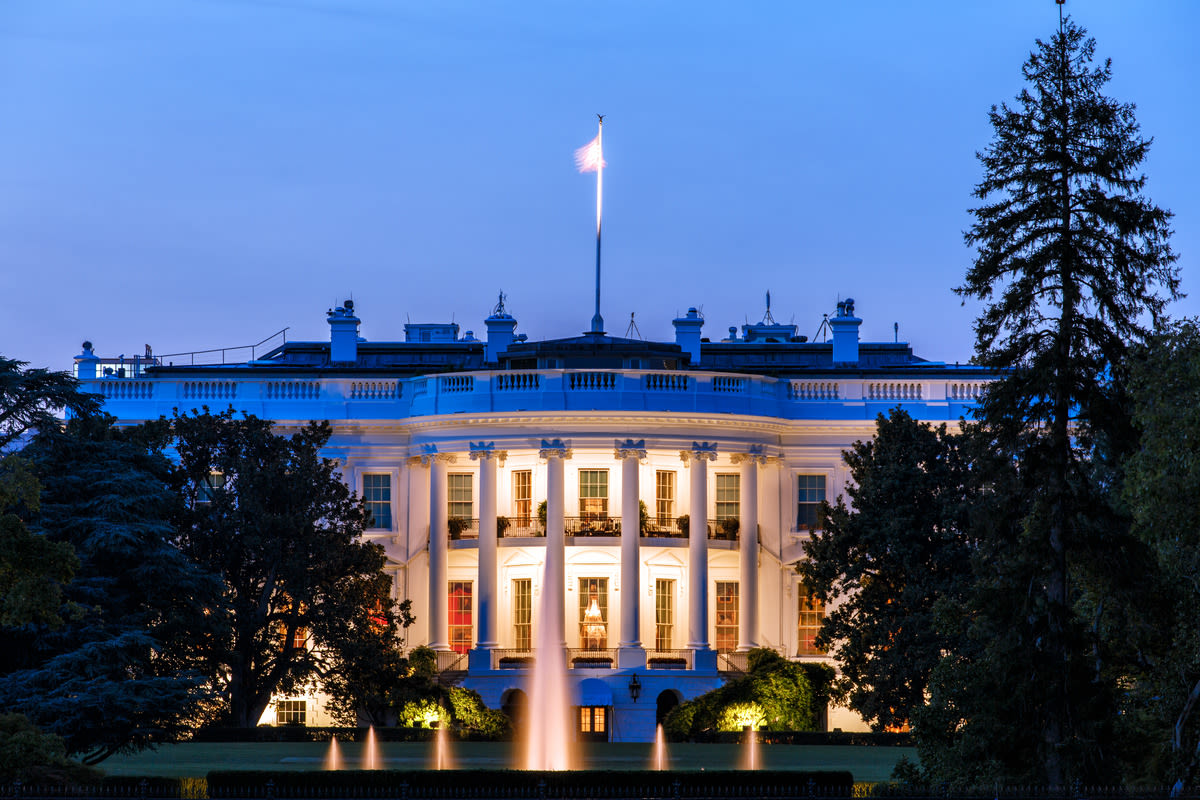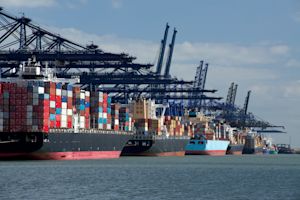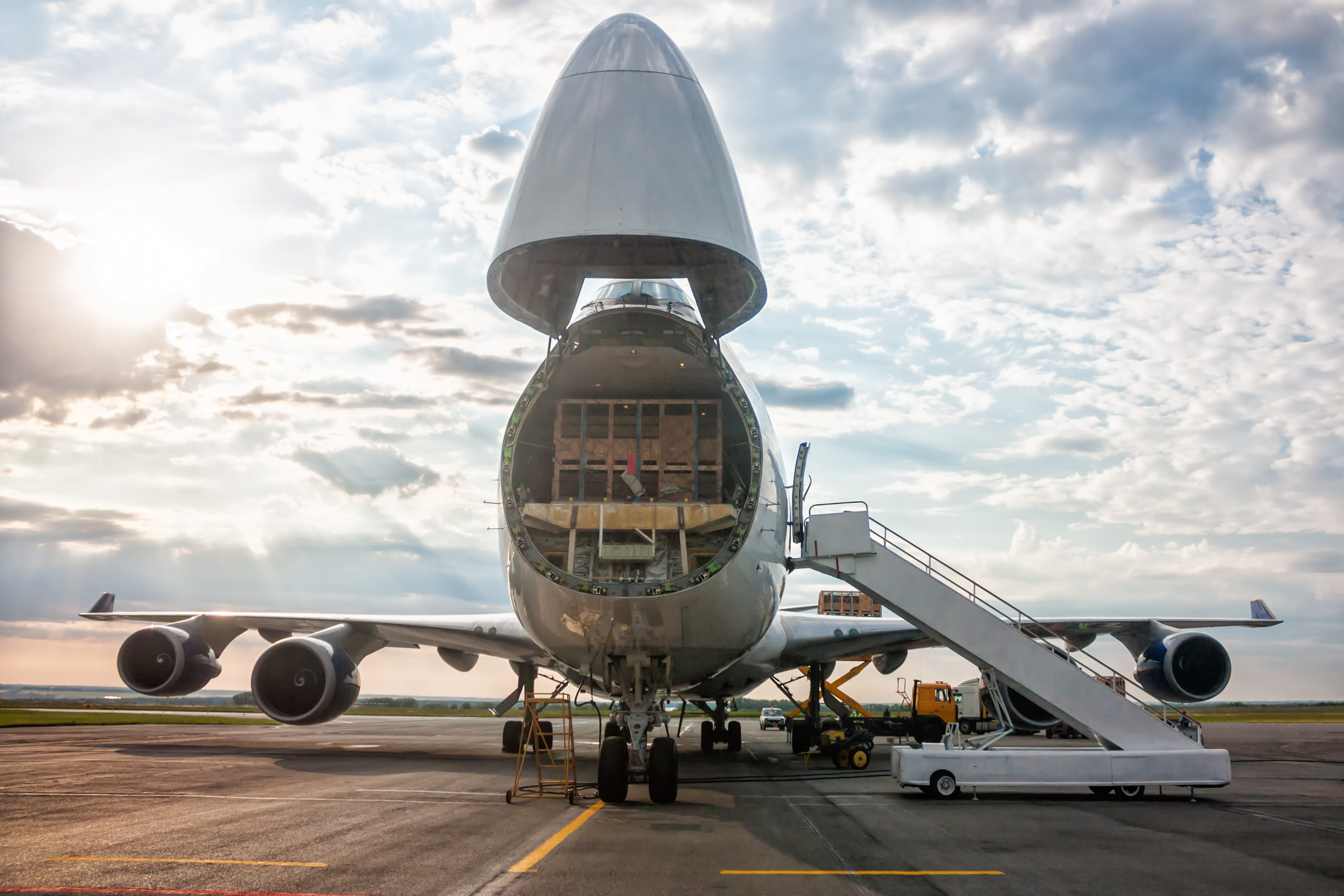
Global Logistics Update
U.K. to Eliminate Duty-Free Exemption for Low-Value Goods; Ex-Asia Air Freight Faces Elevated Demand
North America vessel dwell times and other updates from the global supply chain | May 17, 2023
Global Logistics Update: November 26, 2025

Trends to Watch
Talking Tariffs
- U.K. to Eliminate Duty-Free Exemption for Low-Value Goods: Today, the U.K. announced that it intends to eliminate its duty-free exemption for goods valued under £135 by March of 2029.
- Currently, low-value goods imported into the U.K. qualify for customs duty relief, and are only subject to value-added tax (VAT). Citing a significant increase in the volume of low-value parcels entering the U.K. in recent years, the U.K. government has concluded that existing regulations require reform.
- The U.K. has opened a public consultation, which will close on March 6, 2026. This consultation enables public input on upcoming procedures and changes, including tariff treatment for low-value parcels, data collection and compliance, potential administrative fees, and possible changes to VAT collection.
- The U.K.’s announcement comes just weeks after the EU announced the upcoming end of its own duty-free exemption for low-value parcels, while the U.S. officially eliminated the de minimis exemption back in August.
- U.S. Indicates Possibility of Reduced Steel and Aluminum Tariffs on EU: At a meeting with EU ministers on November 24, U.S. Secretary of Commerce Howard Lutnick and U.S. Trade Representative Jamieson Greer suggested a potential reduction in steel and aluminum tariffs on the EU, contingent upon the EU implementing a “balanced approach” to modifying digital regulations that impact major American technology companies. If the EU makes the appropriate digital concessions, the U.S. may also invest further in EU data centers, Lutnick added.
- These developments indicate a potential softening in the U.S.’s stance on digital regulation in the EU. In late August, President Trump had indicated plans to impose “substantial additional tariffs” on nations that do not remove digital taxes and regulations, along with potential restrictions on U.S. chip exports. While the EU does not impose any bloc-wide digital service taxes, EU regulations like the Digital Services Act and Digital Markets Act are designed to limit the power of major American technology companies.
- In a trade framework announced on August 21, the U.S. and the EU indicated that they would consider tariff rate quotas (TRQs) and other potential measures to address “overcapacity in steel and aluminum.” The U.S. and the EU have repeatedly referenced China, the world’s largest producer of both metals, in discussions concerning overcapacity challenges.
- EU trade ministers have specifically expressed concerns over the broad scope of the U.S.’s steel and aluminum duties, especially in light of the 407 HTS codes that the U.S. added to its list of covered derivative products back in August.
- New Exemptions from Additional 40% Tariff on Brazil: On November 20, President Trump issued an executive order expanding the list of products exempt from the additional 40% tariff on Brazil that took effect in August. The order applies retroactively to goods entered or withdrawn for consumption on or after November 13, 2025.
- Newly exempt products include Brazilian coffee, beef, and many other agricultural imports. Brazil was the biggest supplier of coffee to the U.S. in 2024, accounting for about 22% of total U.S. coffee imports by value.
- On November 14, President Trump issued an executive order exempting a wide range of agricultural imports from reciprocal tariffs. Many of the exemptions contained in that order are also featured in the November 20 order. Brazilian goods covered under both orders will be exempt from both the 10% reciprocal tariff on Brazil and the 40% additional tariff—i.e., fully exempt from IEEPA tariffs.
- Other Recent Developments:
- The EU intends to introduce a transitional solution for eliminating its €150 duty-free threshold as soon as 2026, and a longer-term solution upon the expected launch of the proposed EU Customs Data Hub in 2028. Beyond duties and increased costs, businesses should expect to see new compliance and data reporting requirements; updated procedures for duty collection and remittance; and a modified Import One-Stop Shop (IOSS) scheme, the system that streamlines the declaration and payment of VAT on EU goods valued under €150. Check out our blog for more details, including timelines and potential impacts on ecommerce businesses.
- On November 14, the U.S. published a framework for a trade deal with Switzerland and Liechtenstein, under which most goods from these nations will face a minimum U.S. tariff of 15%. Meanwhile, pharmaceuticals and semiconductors from these nations will be subject to a maximum U.S. tariff of 15%, when those Section 232 cases are live. The timeline for implementing a finalized trade agreement remains unclear.
- On November 13, the U.S. also published trade frameworks with Argentina, Guatemala, Ecuador, and El Salvador, under which the existing U.S. tariff rate on all four nations will remain in place. However, the U.S. intends to eliminate reciprocal tariffs on certain goods that cannot be produced in the U.S., and on select products originating under the Dominican Republic-Central America Free Trade Agreement (CAFTA-DR). Trade agreements with these nations are expected to be finalized in the coming weeks.
- Earlier this month, the U.S. Supreme Court heard oral arguments on the legality of the Trump administration’s IEEPA tariffs. If the Supreme Court rules against the Trump administration’s tariffs, U.S. Customs and Border Protection (CBP) would halt duty collection immediately while refunding duty payments in some way. In such a case, the Trump administration could potentially turn to other statutes—including Sections 301, 232, 122, and 338—to re-implement tariffs or introduce new ones. If the Supreme Court upholds the tariffs, on the other hand, the case could potentially return to the lower courts for another review of certain aspects of the case.
- Check out our live blog for the latest tariff and trade developments.
Calculate your tariff and landed cost impacts in real time with the Flexport Tariff Simulator.
Ocean
TRANS-PACIFIC EASTBOUND (TPEB)
- Capacity and Demand:
- Capacity is anticipated to increase next month, with December levels expected to trend toward 80% to 90%.
- Demand remains stable and flat. The market did not experience a volume surge in response to the previously anticipated November 1 tariff hike, which suggests a “wait-and-see” approach from cargo owners and the absence of a significant demand-driven “peak.”
- Freight Rates:
- November rates continue to drop after the previous General Rate Increase (GRI) was fully eliminated until the end of the month.
- As of now, carriers are expected to proceed with the December 1 GRI. However, its implementation will ultimately depend on market demand.
- The Peak Season Surcharge (PSS) remains postponed until December 15.
FAR EAST WESTBOUND (FEWB)
- Capacity and Demand:
- The market has seen a moderate recovery in demand compared to previous months, but is not yet experiencing a full-scale rebound.
- Demand remains relatively stable compared to levels on the TPEB. This is driven by an ongoing adjustment in Far East export structures that has gradually shifted some trade volumes from Trans-Pacific to EU lanes, which has helped secure a baseline level of EU-directed cargo.
- The end of the EU’s duty-free threshold for low-value goods, expected to take effect as soon as 2026, could further stimulate European inbound volumes.
- With demand levels currently stable and undergoing mild improvement, carriers are deploying capacity control measures to lift spot rates. The 10% weekly capacity reduction in late November and potential blank sailings in December are expected to support subsequent General Rate Increase (GRI) holding efforts.
- Equipment:
- Currently, equipment availability is balanced.
- Freight Rates:
- In Week 48, the Shanghai Containerized Freight Index (SCFI) saw a slight decline. However, most carriers are maintaining their December GRIs.
- Through a combination of blank sailings and other forms of capacity management, carriers are regaining short-term pricing power, creating a more cautious rate environment for shippers.
- The December spot market will play a critical role in shaping the upcoming 2026 contract season. Carriers are expected to push persistently for higher GRIs, even if they do not fully implement these increases.
- In Europe, policy adjustments and uneven demand recovery continue to impact market structures. Meanwhile, ongoing port congestion continues to strain supply chains. This environment has prompted carriers to pursue additional FAK rate increases, while spot rates are expected to remain relatively firm over the coming weeks.
TRANS-ATLANTIC WESTBOUND (TAWB)
- Capacity and Demand:
- Northern European ports are experiencing persistent congestion due to labor strikes, infrastructure bottlenecks, and inland transport disruptions. This has resulted in vessel delays, high yard utilization, operational restrictions, and schedule reliability challenges.
- Mediterranean ports—including Valencia, Piraeus, Algeciras, Barcelona, Genoa, and La Spezia—face elevated congestion, with high yard utilization and vessel berthing delays.
- Equipment:
- Critical container and chassis shortages persist, especially in Austria, Slovakia, Hungary, Southern and Eastern Germany, and Portugal. These shortages have resulted in ongoing operational delays and equipment availability limitations.
- Southern European ports report fewer issues, but overall tightness in equipment supply remains a network-wide challenge.
- Freight Rates:
- North Europe and the West Mediterranean: Carriers are extending rates until the end of December due to weak demand.
- East Mediterranean: Despite high demand in the East Mediterranean, the influence of weak demand in the West Mediterranean has prompted carriers to postpone November Peak Season Surcharges (PSSs) to mid-January of 2026.
INDIAN SUBCONTINENT TO NORTH AMERICA
- Capacity and Demand:
- Routes from the Indian subcontinent to the U.S. remain in a tariff-escalation-induced status quo. Demand remains soft after August’s tariff escalation, and carriers have announced blank sailings through December to balance supply and demand.
- To the U.S. East Coast: Supply continues to outstrip demand. However, there are fewer blank sailings announced for December than in November.
- To the U.S. West Coast: Capacity remains available, given supply dynamics on the TPEB into the U.S. West Coast.
- Freight Rates:
- To the U.S. East Coast: Heading into December, the market is declining further on base lanes. Even with carriers enacting capacity management strategies, there is not enough demand for rates to hold.
- To the U.S. West Coast: August’s tariff increases and oversupply on core TPEB lanes continue to maintain low rate levels.
Air
- North China:
- The Trans-Pacific market continues to experience sharp increases in demand, intensifying capacity constraints and driving significant upward pressure on pricing. Ecommerce volumes remain the main driver of this surge, with the most notable impact seen on U.S. East Coast routes.
- South China:
- A peak period is emerging this week, with elevated demand and strong booking activity across all major trade lanes. Capacity is tightening further as we move into the holiday season.
- To secure space, shippers are encouraged to book at least one week in advance.
- Taiwan:
- Both Trans-Pacific and Asia-Europe routes continue to see strong demand, with volumes boosted by pre-holiday activity. Market levels remain generally stable compared to the previous week.
- Vietnam:
- Heading into the end of the month, the market remains extremely tight. Most capacity has already been allocated well in advance, and space constraints persist across key U.S. destinations. This has resulted in congestion and extended lead times, with no immediate signs of improvement expected in the near term.
- South Korea:
- Capacity is critically tight as sustained levels of high demand limit available space.
- With minimal transshipment options, direct flight allocation has become increasingly challenging.
- Malaysia:
- Strong outbound demand to key global gateways persists, resulting in highly constrained overall market capacity.
- Rapid increases in market rate levels reflect the ongoing imbalance between demand and available uplift.
- Indonesia:
- Demand on routes to major global destinations remains high, resulting in continued strain on available capacity. Market congestion remains widespread.
- Shippers are encouraged to book early, preferably at least a week in advance, to ensure timely shipment handling.
- Thailand:
- Local demand remains strong and capacity remains congested, both on direct and transit routes.
- For the best likelihood of confirming space, shippers are encouraged to secure bookings at least seven to ten days prior to departure.
(Source: Flexport)
Please reach out to your account representative for details on any impacts to your shipments.
North America Vessel Dwell Times

Webinars
Air Market Predictions for 2026
Wednesday, December 3 @ 8:00am PT / 11:00am ET / 16:00 GMT / 17:00 CET
Unboxing Holiday Trends: Learnings from Black Friday & Cyber Monday
Thursday, December 4 @ 9:00am PT / 12:00pm ET
North America Freight Market Update Live
Thursday, December 11 @ 9:00am PT / 12:00pm ET
Ocean Market Predictions for 2026
Available On-Demand
Ocean Timeliness Indicator
Transit time increased from China to the U.S. West Coast, but decreased from China to the U.S. East Coast and from China to North Europe.
Week to November 24, 2025
Transit time from China to the U.S. West Coast increased from 32.3 to 33.2 days. Meanwhile, transit time from China to the U.S. East Coast decreased from 52.8 to 50.6 days. Finally, transit time from China to North Europe also decreased, dropping slightly from 60 to 59.3 days.

See the full report and read about our methodology here.
About the Author






